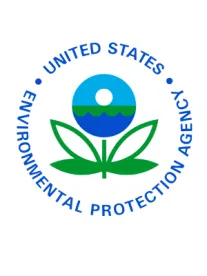When the U.S. Supreme Court decided in Sackett v. EPA that Environmental Protection Agency (EPA) wetland compliance orders were appealable, one question was how far would other courts extend the Supreme Court’s reasoning? Two years later, the answer is becoming clear on at least one front: courts continue to hold that wetland jurisdictional determinations are not appealable. In Belle Company v. U.S. Army Corps of Engineers, the Fifth Circuit was the latest court to say so.
For years, most courts have refused to hear appeals from U.S. Army Corps of Engineers (Corps) determinations that certain wetlands are jurisdictional, reasoning that such jurisdictional determinations (JDs) are not final agency actions under the Administrative Procedure Act (APA). Instead, these courts have almost uniformly held that the aggrieved party must wait until he or she applies for a wetland permit and the permit is either accepted or rejected.
A similar but different concept applied in Sackett. There, the question was the appealability of EPA compliance orders which, prior to Sackett, were held not to be appealable until the EPA sought to enforce them. In 2012, the Supreme Court decided in Sackett that, for several reasons, compliance orders were indeed appealable prior to agency attempts to enforce them. One of the questions that resulted from the Sackett decision was whether other courts would extend its reasoning to the appeal of JDs. In Belle Co, the Fifth Circuit said no, joining federal district courts in Minnesota and the District of Columbia, which had earlier so ruled.
Plaintiff Belle Co owned land in Louisiana that the Corps determined in a 2011 JD, contained federally-jurisdictional wetlands. This was so despite the fact that, in 1991, the Corps had “informed Belle that the property correctly was designated as prior-converted cropland by the United States” and that “[i]n 1993, the Corps and the United States Environmental Protection Agency (“EPA”) promulgated a final rule that excluded property designated as prior-converted cropland from the definition of waters of the United States.” Similarly “[i]n 1995, the [Department of Agriculture] informed Belle that the property was prior-converted cropland and not a wetland under the 1990 Food and Security Act.” In large part, the Corps’ change in view was the result of the fact that in “2005, NRCS and the Corps jointly promulgated guidance, which stated that a previous designation as prior-converted cropland would be valid if a property was devoted to agricultural use but not if it had changed to a nonagricultural use (the “change-in-use policy”).”
Belle appealed and challenged the procedure under which the Corps issued the JD, citing the Sackett decision. The court concluded that a JD does indeed “mark[] the consummation of the Corps’ decision-making process as to the question of jurisdiction”, which is the first part in the test as to whether an agency action is a final one. However, the Fifth Circuit found that the JD failed the second part of the finality test – whether it is “an action ‘by which rights or obligations have been determined, or from which legal consequences will flow’.”
Highlights of the Fifth Circuit Decision
The court distinguished Sackett in reaching its decision, reasoning that:
-
“First, and foremost, the compliance order [reviewed by the Supreme Court in Sackett] independently imposed legal obligations because it ordered the Sacketts promptly to restore their property according to an EPA-approved plan and give the EPA access to site records and documentation. Sackett, 132 S. Ct. at 1371-72. By contrast, the JD is a notification of the property’s classification as wetlands but does not oblige Belle to do or refrain from doing anything to its property.”
-
“Second, the compliance order in Sackett itself imposed, independently, coercive consequences for its violation because it ‘expose[d] the Sacketts to double penalties in a future enforcement proceeding,’ Sackett, 132 S. Ct. at 1372. By contrast, the JD erects no penalty scheme.”
-
“Third, whereas the compliance order in Sackett severely limited the Sacketts’ ability to obtain a 404 permit from the Corps, see Sackett, 132 S. Ct. at 1372, the JD operates oppositely, informing Belle of the necessity of a 404 permit to avoid enforcement action.”
-
“Fourth and finally, the compliance order in Sackett determined that the Sacketts’ property contained wetlands and that they had discharged material into those wetlands in violation of the CWA.” “By contrast, the JD does not state that Belle is in violation of the CWA, much less issue an order to Belle to comply with any terms in the JD or take any steps to alter its property.” “Moreover, while the Corps, responsive to Belle’s own inquiry, has made a determination as to the presence of wetlands on Belle’s property, it renders no regulatory opinion as to Belle’s ultimate goal to build a landfill.”
Thus, the court agreed with the pre-and post-Sackett courts and confirmed that a JD is not reviewable final agency action under the APA.



 />i
/>i

